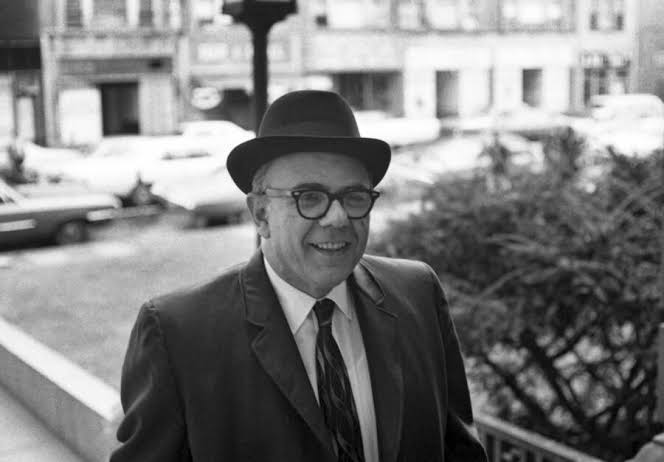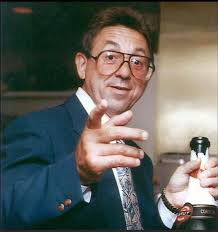Adolfo “Big Al” Bruno was a prominent figure in organized crime, specifically within the Genovese crime family’s Springfield, Massachusetts faction. His rise to power and subsequent fall paint a vivid picture of the deadly intrigue that often defines the Mafia world. Bruno’s life as a crime boss, followed by his brutal assassination in 2003, showcases the ruthlessness and shifting allegiances within the underworld.
Early Life and Criminal Beginnings
Adolfo Bruno was born in 1945 in Bracigliano, Italy, before his family immigrated to the United States. Like many immigrants of the era, Bruno’s family settled in a tightly-knit Italian-American community, where ties to both family and local enterprises were strong. As Bruno grew older, he became drawn to the illicit opportunities that came with organized crime, seeing it as a means to power and influence.
Bruno’s early years in Springfield, Massachusetts, involved him aligning with the powerful Genovese crime family. The Genovese family, one of the Five Families of New York, had extended its reach into various regions of the northeastern United States, including parts of Massachusetts. Bruno’s ambition and ability to navigate the complexities of organized crime earned him a respected position within the family’s Springfield operations, which primarily revolved around gambling, loan sharking, and extortion.
Rise to Power
By the 1980s, Adolfo Bruno had established himself as a key figure in Springfield’s underworld. The local Mafia faction operated under the larger Genovese umbrella, and Bruno was tasked with overseeing the region’s lucrative illegal enterprises. His leadership style was marked by a balance of old-school Mafia loyalty and a cautious approach to expanding the family’s interests. Unlike more reckless mobsters, Bruno preferred to avoid unnecessary bloodshed, which earned him the nickname “The Gentle Don”—a moniker similar to Philadelphia’s Angelo Bruno (no relation).

Throughout the 1990s, Bruno maintained control over Springfield’s organized crime activities with relative stability. His ability to foster alliances with local and regional crime figures while keeping law enforcement at bay made him a valuable asset to the Genovese family. However, the Mafia world is one where loyalty can be both a strength and a vulnerability, and Bruno’s approach would eventually put him at odds with more ambitious members of his organization.
Internal Strife and the Plot Against Bruno
As the 1990s came to an end, tensions within the Springfield Mafia began to rise. Younger, more aggressive figures within the organization, such as Anthony Arillotta, grew dissatisfied with Bruno’s leadership. Arillotta and his allies viewed Bruno as too conservative, believing that his reluctance to engage in riskier, more lucrative ventures—such as narcotics trafficking—was hindering the faction’s growth.
These internal divisions, combined with Arillotta’s ambition to take over Bruno’s operations, led to a deadly power struggle. In the mafia, betrayals are commonplace, and those who seek to rise often do so by eliminating those above them. For Bruno, his status as an established boss became a target for Arillotta and his crew.
Behind the scenes, Arillotta and his associates began to plot Bruno’s demise. Seeking approval from higher-ups within the Genovese family, Arillotta positioned himself as the successor to Bruno’s territory. The decision was made: Adolfo Bruno was to be removed.
The Murder of Adolfo Bruno
On the night of November 23, 2003, Adolfo Bruno was gunned down outside his social club in Springfield, Massachusetts. He had just finished playing cards and was walking to his car when an assassin, hired by Arillotta, shot him multiple times. The hit was a textbook Mafia execution—cold, calculated, and final.
Bruno’s assassination shocked the local community and sent ripples through the underworld. At the time of his murder, Bruno was 58 years old and still a powerful figure within the Genovese family’s Springfield faction. His murder marked the culmination of the internal power struggle that had been brewing for years.
In the aftermath, Anthony Arillotta, who had orchestrated the hit, took over Bruno’s criminal operations. However, the transition of power did not go unnoticed by law enforcement. The FBI had been investigating the Springfield Mafia for years, and Bruno’s murder provided the necessary leverage to build cases against those involved in the hit.
The Aftermath: Justice for Bruno
The years following Bruno’s murder saw a series of arrests and trials that would unravel the Springfield Mafia. In 2010, Anthony Arillotta was arrested on multiple charges, including his role in Bruno’s murder. Facing life in prison, Arillotta made the decision to cooperate with federal authorities, becoming a government witness against his former associates.
Arillotta’s testimony led to the conviction of several individuals involved in Bruno’s murder, including , who acted as the hitman, and several other members of the Springfield crew. The trials painted a clear picture of the internal power struggle that had led to Bruno’s assassination, with Arillotta admitting that he had sought to take control of the Springfield operations by eliminating his boss.

In a twist that further demonstrated the cutthroat nature of organized crime, Arillotta’s cooperation led to his release from prison after serving just a few years. By 2017, Arillotta had been released from witness protection and was reportedly living under a new identity. For the families of those who were murdered or betrayed by Arillotta, his early release was a bitter pill to swallow.
Legacy of Adolfo Bruno
Adolfo “Big Al” Bruno’s life and death reflect the volatile nature of Mafia leadership. Bruno was a product of the old guard, a time when mobsters ruled with both force and diplomacy. He was not a man known for rampant violence, but rather for his ability to keep his operations running smoothly, balancing the fine line between criminality and maintaining order.
However, Bruno’s reluctance to embrace the more aggressive and lucrative criminal activities—like the drug trade—ultimately sealed his fate. In a world where ambition often leads to betrayal, Bruno’s murder was a stark reminder of the Mafia’s brutal realities.
His assassination not only marked the end of his era but also signaled the decline of the Mafia in Springfield. The infighting, combined with increasing pressure from law enforcement, eroded the Mafia’s power base. With Arillotta’s cooperation with the government, Springfield’s Mafia was effectively dismantled.
While Adolfo Bruno may not have reached the level of notoriety as some of his Mafia contemporaries, his story is an important chapter in the broader narrative of organized crime in America. His rise to power, leadership, and eventual fall provide insight into the internal power struggles that define the Mafia and serve as a cautionary tale about the fleeting nature of power in the underworld.

Why is Angelo Bruno’s photo on this ?
Because he’s mentioned in the article.